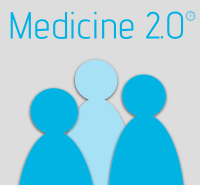Patient Problem-Solving on the Web: How do Patients Use Web Forums to Cope with Chronic Disease?
|
If you are the presenter of this abstract (or if you cite this abstract in a talk or on a poster), please show the QR code in your slide or poster (QR code contains this URL). |
Abstract
Introduction:
Patients' use of the web, particularly patient-to-patient (e.g., online fora) ,is playing an influential and transformative role in health care, particularly around chronic diseases (Fox07). We need to understand the specific types of work that patients attempt in online fora and the barriers or facilitators to their goals. This can guide design of new web health technologies, across the varied types of sites, tools, and activities. We are studying naturally occurring material (Coulson,Buchanan,&Aubeeluck07) postings on health fora about several chronic diseases.
Method: We have collected a large amount of material from public forums on several chronic diseases. We have selected fora and within fora sampled threads over time with additional inclusion of long threads. Our initial analysis focuses on the first message of each thread, to identify the issues patients raise and how exchanges are initiated. We have developed coding to capture variation and patterns suggested by extensive reading of the material. In our talk we will present qualitative and quantitative findings.
Results:
We will report on three of the first-message codes we developed, for Form, Topic and Schema, and summary results. Form was coded as Ask (for information or action), Tell (personal or general information), and Other (including Greetings and Jokes). Topic was coded as Physiological (treatments, mechanisms...), Pragmatic (providers, insurance,...), and Social/Emotional (comfort, sympathy, validation). Neither Form nor Topic codes have mutually exclusive values: For example, the primary form of a message might be ASKing for information, but include TELLing; or multiple topics might be addressed. In our initial sample of 100 threads, 60% of first messages concerned Physiological, 40% were Social/Emotional, 40% were pragmatic, and few percent were other. 33% of the messages were multi-topic.
We looked for frequently recurring message 'schemas', conventional structures of the message as a whole. 1) In the Problem&Question schema, the user asks a question about a problem (typically, own health) but also tells about their condition as background; 1/4 of the messages fit this schema. 2) In Give-Information, the user simply posts information judged valuable to the community or an individual; 1/8 of the messages fit this schema. Content may be expert-authored or come from personal experience.
Discussion:
Overall, a wide range of difficult activities were addressed in first-messages. On the cognitive side these included reasoning about causes and treatment effectiveness, responding to or planning for visits to providers, soliciting help in making a decision, and gaining initial understanding of an unfamiliar condition, treatment, or test. On the emotional side, these included asking for help facing a frightening event, venting, validating experience, and providing specific encouragement or concern. Message coherence and complexity varied greatly.
We will report qualitative and quantitative analysis of first-messages on user forums for chronic disease, characterizing the types of problems that users try to solve in online communities. Our next step is to look at the problem solving outcomes and methods of the community's response across a thread. We also plan to compare this to other web forms of patient-to-patient interaction.
Patients' use of the web, particularly patient-to-patient (e.g., online fora) ,is playing an influential and transformative role in health care, particularly around chronic diseases (Fox07). We need to understand the specific types of work that patients attempt in online fora and the barriers or facilitators to their goals. This can guide design of new web health technologies, across the varied types of sites, tools, and activities. We are studying naturally occurring material (Coulson,Buchanan,&Aubeeluck07) postings on health fora about several chronic diseases.
Method: We have collected a large amount of material from public forums on several chronic diseases. We have selected fora and within fora sampled threads over time with additional inclusion of long threads. Our initial analysis focuses on the first message of each thread, to identify the issues patients raise and how exchanges are initiated. We have developed coding to capture variation and patterns suggested by extensive reading of the material. In our talk we will present qualitative and quantitative findings.
Results:
We will report on three of the first-message codes we developed, for Form, Topic and Schema, and summary results. Form was coded as Ask (for information or action), Tell (personal or general information), and Other (including Greetings and Jokes). Topic was coded as Physiological (treatments, mechanisms...), Pragmatic (providers, insurance,...), and Social/Emotional (comfort, sympathy, validation). Neither Form nor Topic codes have mutually exclusive values: For example, the primary form of a message might be ASKing for information, but include TELLing; or multiple topics might be addressed. In our initial sample of 100 threads, 60% of first messages concerned Physiological, 40% were Social/Emotional, 40% were pragmatic, and few percent were other. 33% of the messages were multi-topic.
We looked for frequently recurring message 'schemas', conventional structures of the message as a whole. 1) In the Problem&Question schema, the user asks a question about a problem (typically, own health) but also tells about their condition as background; 1/4 of the messages fit this schema. 2) In Give-Information, the user simply posts information judged valuable to the community or an individual; 1/8 of the messages fit this schema. Content may be expert-authored or come from personal experience.
Discussion:
Overall, a wide range of difficult activities were addressed in first-messages. On the cognitive side these included reasoning about causes and treatment effectiveness, responding to or planning for visits to providers, soliciting help in making a decision, and gaining initial understanding of an unfamiliar condition, treatment, or test. On the emotional side, these included asking for help facing a frightening event, venting, validating experience, and providing specific encouragement or concern. Message coherence and complexity varied greatly.
We will report qualitative and quantitative analysis of first-messages on user forums for chronic disease, characterizing the types of problems that users try to solve in online communities. Our next step is to look at the problem solving outcomes and methods of the community's response across a thread. We also plan to compare this to other web forms of patient-to-patient interaction.

Medicine 2.0® is happy to support and promote other conferences and workshops in this area. Contact us to produce, disseminate and promote your conference or workshop under this label and in this event series. In addition, we are always looking for hosts of future World Congresses. Medicine 2.0® is a registered trademark of JMIR Publications Inc., the leading academic ehealth publisher.

This work is licensed under a Creative Commons Attribution 3.0 License.



